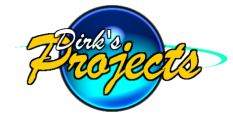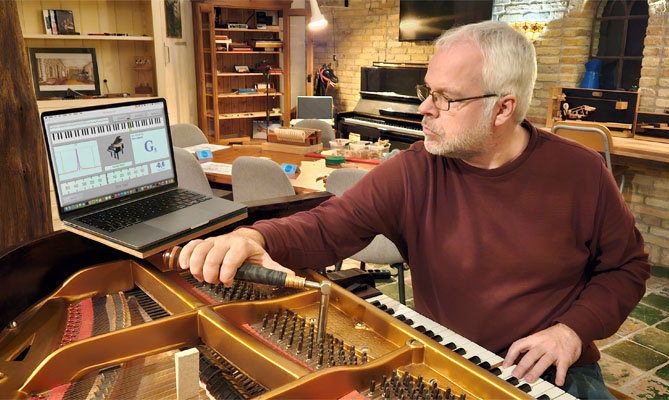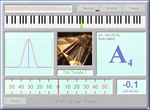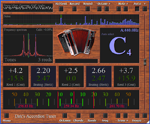
Information
Frequently asked questions
General
My antivirus software blocks your program. How can I proceed?
Antivirus related issues can easily be solved.
Antivirus software is always suspicious of programs downloaded from the Internet. The programs on this website can be fully trusted though.
Modern antivirus software will automatically send a copy of the program to their lab for analysis. You will receive a message from them some time later, confirming that the program is indeed clean and safe to use. This will take between a few minutes to a few hours. In the meantime you will not be able to use the program.
As soon as you receive the confirmation from your antivirus software you can start the program with the icon on your desktop. Do not install the program again because your antivirus software might think it is a new program and start analyzing it all over again.
If you still have issues regarding your antivirus software, please send us a message with the following information:
1. The name of your antivirus software.
2. A description of the issue.
3. The name and version of your operating system.
How can I stay informed about news and updates for the software?
Click the button 'News' top left of the webpage. From there you can subscribe to our newsletter, which contains all the important information. Of course you can also check the website regularly.
I lost your program. What can I do?
If you deleted or uninstalled the program by accident, you can reinstall it on the same computer using the setup file you received from me.
How do I install the software on a computer without an Internet connection?
An Internet connection is needed to download and install the software. After installation, no internet connection is required. Use one of the methods below to create a temporary Internet connection:
- Connect an ethernet cable from your computer to your Internet router.
- Enable the WiFi on your computer and connect to your WiFi network.
- If you do not have a WiFi network, visit a public Internet Cafe.
- Turn on the WiFi hotspot on your smartphone and connect to it with your computer.
- If your computer does not have WiFi, insert a WiFi USB adapter.
- Activate Bluetooth on your smartphone and set it to discoverable. Also turn on the hotspot feature on your smartphone and connect to it with the Bluetooth of your computer.
- If your computer does not have Bluetooth, insert a Bluetooth USB adapter.
- Connect your computer with another computer that does have an Internet connection using an ehternet cable. Share the Internet connection on the other computer in the Windows Network Connection Properties.
I would like to use the software on two computers. Can you offer me a discount?
Yes, we can. Your license allows you to install the software on one computer. If you want two or more licenses, please contact us. We can offer an interesting discount.
I'm expecting an e-mail, but it takes a long time. What is going on?
Chances are that our e-mail ended up in your spam folder. Please mark the e-mail as "Not spam" or move the e-mail from the spam folder to the inbox folder. This will help the spam filter in the future to recognize that this is no spam.
Your program and manual are not available in my language. Is there going to be support in other languages?
We are not sure. We depend on others for these translations. As soon as a new language is available it will be available on our website. If you want to help creating a translation, send us an email.
When I have an idea or suggestions to improve one of the programs, who do I contact?
Ideas and suggestions for the existing programs or even new programs are welcome. You can send an email stating your idea/suggestion(s). All ideas and suggestions are placed on a 'wishlist', the best ones at top. We are constantly improving the software and will try to implement as many ideas as possible.
The software setup does not succeed. How can I proceed?
It is probably your antivirus software blocking the setup. Try to disable your antivirus software temporarily. This is often possible by right clicking the antivirus icon in the bottom right corner of your desktop (in the system tray).
What antivirus software do you use? We will contact them to report a false positive.
The tuner always shows a G or a B. What's causing this?
You suffer from a 50 or 60Hz power hum. This hum comes from the mains. Some microphones are extra sensitive to such a hum. Try the following possible solutions:
- Try a USB microphone. A USB microphone such as the 'Samson Go Mic' is recommended.
- When using a laptop, unplug the power cord and let the laptop work on the battery.
- Use a grounded plug.
- In the “Sound Input Settings” screen enable one of the Hum filters.
Hardware
What microphone should I choose?
An external microphone with a cable connected to the computer is the preferred configuration, because it can be easily placed in a proper location. You should not use a microphone specific for voice. Too many frequencies will be filtered out. A USB microphone such as the 'Samson Go Mic' is recommended. In that case, the internal sound card of the computer is not used, which can be an advantage. Any digital sound effects in the microphones driver software have to be disabled!
Accordion Tuner
After updating my OS, the software does not work anymore. Is there an update of the software available?
Updates are available for the OS versions listed below.
Compatibility
Microsoft

- Desktop
- Laptop
- Netbook
- Tablet
- Phone
- Pocket PC
- Windows 11
- Windows 10
- Windows 8.1
- Windows 8
- Windows 7
- Windows Vista
- Windows XP
- Windows ME
- Windows 2000
- Windows 98
- Windows Phone
- Windows RT
Apple

- iMac
- Mac Pro
- Mac mini
- MacBook
- Intel cpu
- Apple M-Chips
- iPad
- iPhone
- Sequoia
- Sonoma
- Ventura
- Monterey
- Big Sur
- Catalina
- Mojave
- High Sierra
- Sierra
- El Capitan
- Yosemite
- Mavericks
- Mountain Lion
- Lion
- Snow Leopard
- Leopard
- Tiger
- iOS iPhone
- iOS iPad
The tuner is available in the following languages:
When I measure multiple reeds using the accordion tuner, I don't see all reeds. What's causing this?
This can be the result of one of the following:
- The number of reeds does not correspond to the number of reeds set in the tuner's configuration. This can be corrected by clicking the 'Reeds' button.
- The tuner is capable of tuning three reeds at the same time.
- When measuring single notes, the three reeds have to lie within that same note. The three reeds must not lie within multiple octaves.
- When measuring chords, each note of the chord must contain one reed and all reeds must lie within the same octave.
- When measuring octaves, each reed has to lie within different octaves.
- When the microphone is positioned on one side of the accordion, it is possible that the recording level of reeds on the other side of the accordion is too low. In that case, you will have to reposition the microphone.
- When two reeds sound at exactly the same frequency (within 0,6 Herz difference), the tuner will recognize these two reeds as one.
Where can I find the beat lists?
The beat lists are not included with the software. The trial version of the software includes a few examples. However, these are only examples. You can easily create the beat lists yourself. With the module "Record & Report" you can even easily copy them from an existing instrument.
See chapter "Beat lists" of the manual for more information
How do I tune an accordion with 4 or 5 reeds in musette tuning?
The accordion tuner can measure up to 3 reeds simultaneously. By creating two beat lists it is possible to tune an accordion with 4 (LMMH) or 5 (LMMMH) reeds.
- Create a beat list for 3 reeds (LMH). The remaining M-reeds will be tuned using a second beat list.
- Create a second beat list for 2 (MM) or 3 (MMM) reeds. One of these reeds will be tuned with the first beat list. This reed is in this beat list too, so it can act as a reference while tuning the remaining M-reeds.
- Tune the first 3 reeds (LMH) with the first beat list. Keep the remaining (1 or 2) M-reeds muted.
- Tune the remaining (1 or 2) M-reeds with the second beat list. Sound all M-reeds; also the one already tuned with the first beat list. Keep the L and H-reeds muted.
The accordion tuner has difficulties detecting the right tones quickly. What could be the cause of this?
- While measuring a tone, the number of sounding reeds must be the same as the selected number in the tuner software. The other reeds must be muted.
- After starting the tuner software, do not start playing a tone as long as the text "Initializing..." is displayed.
- The sounding tone needs to be constant for three seconds or longer. The text "locked" will appear then.
- Before playing a sound a few seconds of silence is necessary.
- If the note to measure lasts for too long (approximately 30 seconds), then it will be recognized as a background sound and will be removed.
- See to quiet surroundings. A humming fan too close to the microphone can disturb the recording.
- You should not use a microphone specific for voice. Too many frequencies will be filtered out. A USB microphone such as the "Samson Go Mic" is recommended.
- Do you have a stereo microphone? It must be configured as mono!
- Make sure the microphone sound is not played through the speakers. Some soundcards support this through their Windows Mixer Settings.
- Any digital sound effects in the microphones driver software have to be disabled! Look for effects like “noise reduction” and “echo”.
- In your microphone's properties, advanced tab: disable any Signal Enhancements. You can access the microphone properties in the tuner's sound input settings by clicking the 'Windows Recording Control for the selected device' button.
- On macOS, the Mic Mode has to be set to Standard: 1. Start the tuner. 2. Click on the yellow microphone at the top of the screen. 3. Set the Mic Mode in all tabs.
- On macOS, Ambient Noise Reduction has to be turned off: 1. Go to System Settings. 2. Select: Sound. 3. Select: Input. 4. Turn off: Ambient Noise Reduction
- The microphone must be placed at the side of the instrument where the sound is coming from.
- The microphone must be placed close to the instrument.
- Make sure the right microphone is selected in the tuner software's settings screen. With laptops it is easy to mistakenly select the internal microphone.
- Some computers suffer from a power supply hum. If you have a laptop you can check this by disconnecting the power cable. A USB microphone will solve this issue.
- A 50 or 60Hz power hum filter can be enabeld in the settings screen of the tuner software. In some situations this filter can prevent the software from detecting the lower tones properly.
- In the settings screen of the tuner software the microphone volume has to be configured as sensitive as possible. The signal strength should never reach the red zone though.
- If there is a "boost" checkmark for the microphone (in the settings screen of the tuner software), you should try it and check its results.
- With newer computers sometimes a boost setting (often a percentage) in the microphone driver software is supported.
- The minimum beat that can be measured is about 0.6Hz. Below that, the reeds have to be measured separately.
- Keep the bellow pressure constant while measuring. The pitch of a reed decreases when the bellow pressure increases.
What can I do with the trial version of the software?
The trial version is meant for getting a good idea of the possibilities of the tuner. Only part of the notes from the scale can be measured with this version. The following notes are supported:
E0 F0 G#0 A0 C1 C#1 E1 F1 G#1 A1 C2 C#2 E2 F2 G#2 A2 C3 C#3 E3 F3 G#3 A3 C4 C#4 E4 F4 G#4 A4 C5 C#5 E5 F5 G#5 A5 C6 C#6 E6 F6 G#6 A6 C7 C#7 E7 F7 G#7 A7 C8 C#8 E8 F8 G#8 A8 C9
You can download the trial version here
Piano Tuner
After updating my OS, the software does not work anymore. Is there an update of the software available?
Updates are available for the OS versions listed below.
Compatibility
Microsoft

- Desktop
- Laptop
- Netbook
- Tablet
- Phone
- Pocket PC
- Windows 11
- Windows 10
- Windows 8.1
- Windows 8
- Windows 7
- Windows Vista
- Windows XP
- Windows ME
- Windows 2000
- Windows 98
- Windows Phone
- Windows RT
Apple

- iMac
- Mac Pro
- Mac mini
- MacBook
- Intel cpu
- Apple M-Chips
- iPad
- iPhone
- Sequoia
- Sonoma
- Ventura
- Monterey
- Big Sur
- Catalina
- Mojave
- High Sierra
- Sierra
- El Capitan
- Yosemite
- Mavericks
- Mountain Lion
- Lion
- Snow Leopard
- Leopard
- Tiger
- iOS iPhone
- iOS iPad
The tuner is available in the following languages:
How does the piano tuning software tune a piano to the equal temperament?
The software works just like a technician that tunes by ear. The software "listens" to the beats in the intervals of the particular piano (so the consonance of the instrument is taken into account). It not only listens to the fundamental tones, but also to a lot of harmonics.
The software uses the following model:
- A4 will be at the user specified frequency. (default = 440 Hz)
- The interval A3-A4 will sound clean.
- Tuning the temperament octave F3-F4:
The octave F3-F4 will sound clean.
Major thirds will beat faster going up the keyboard.
Major sixths will beat faster going up the keyboard.
Fifths will sound clean.
Fourths will beat slowly.
The three major thirds F3-A3, A3-C#4, C#4-F4 will beat close to 7, 9 and 11 beats per second. - Tuning the bass:
Octaves will sound clean.
Fifths will sound almost clean.
Fourths will beat slowly.
Minor thirds will beat faster going up the keyboard.
Major thirds will beat faster going up the keyboard.
Major thirds will beat slower than minor thirds. (not always possible)
Minor thirds will beat equal to major sixths. (not always possible)
Octave-minor sevenths will beat faster going up the keyboard.
Octave-augmented fourths will beat faster going up the keyboard. - Tuning the treble:
Octaves will sound fairly clean.
Fifths will beat very slowly.
Fourths will have a slow beat.
Octave-fifths will sound fairly clean.
Tenths will beat faster going up the keyboard.
Tenths will beat a little faster than thirds.
Seventeenths will beat faster going up the keyboard.
Seventeenths will beat faster than tenths.
Double octaves will sound fairly clean.
How do I pull a piano, that has dropped in pitch a lot, back up to 440 Hz?
Check out chapter "Raising the pitch" in the manual.
Can I tune a piano to another frequency than 440 Hz?
Yes, you can tune a piano to any frequency you like. The A4-frequency can be set in the stretch screen of the software. You can even set the A4-frequency to the current frequency of your piano prior to recording the strings. Then after recording and before calculating the optimal stretch, you set the A4-frequency to the frequency you like.
What can I do with the trial version of the software?
The trial version is meant for getting a good idea of the possibilities of the tuner. As with the full version, the trial version can record all notes. After that, the optimal stretch can be calculated. The trial version calculates the optimal frequencies of all As (A0 - A7) and all Es (E1 - E7). These tones can then be tuned. All the tones in between cannot be tuned.
This way it is possible to tune a series of intervals over the entire range of the piano:
- Octaves: A0-A1, A1-A2 etc. E1-E2, E2-E3 etc.
- Fifths: A0-E1, A1-E2 etc.
- Fourths: E1-A1, E2-A2 etc.
You can download the trial version here
The tuner software has difficulties detecting the right tones quickly. What could be the cause of this?
- All keys of the piano need to be recorded before calculating the optimal stretch.
- While measuring a key, only one string may sound. The other strings (of the same key) must be muted.
- For each key only one string needs to be recorded. If a string is difficult to record, you can record one of the other strings of this key.
- The keys need to be recorded from low to high. You cannot skip a key. This means that when one key cannot be recorded, all higher keys cannot be recorded either.
- See to quiet surroundings. A humming fan too close to the microphone can disturb the recording.
- You should not use a microphone specific for voice. Too many frequencies will be filtered out. A USB microphone such as the "Samson Go Mic" is recommended.
- Do you have a stereo microphone? It must be configured as mono!
- Always use a recording of the same piano. After structural changes (like replacing strings), create a new recording.
- Make sure the microphone sound is not played through the speakers. Some soundcards support this through their Windows Mixer Settings.
- Any digital sound effects in the microphones driver software have to be disabled! Look for effects like “noise reduction” and “echo”.
- In your microphone's properties, advanced tab: disable any Signal Enhancements. You can access the microphone properties in the tuner's sound input settings by clicking the 'Windows Recording Control for the selected device' button.
- On macOS, the Mic Mode has to be set to Standard: 1. Start the tuner. 2. Click on the yellow microphone at the top of the screen. 3. Set the Mic Mode in all tabs.
- On macOS, Ambient Noise Reduction has to be turned off: 1. Go to System Settings. 2. Select: Sound. 3. Select: Input. 4. Turn off: Ambient Noise Reduction
- Make sure the right microphone is selected in the tuner software's settings screen. With laptops it is easy to mistakenly select the internal microphone.
- Some computers suffer from a power supply hum. If you have a laptop you can check this by disconnecting the power cable. A USB microphone will solve this issue.
- In the settings screen of the tuner software the microphone volume has to be configured as sensitive as possible. The signal strength should never reach the red zone though.
- If there is a "boost" checkmark for the microphone (in the settings screen of the tuner software), you should try it and check its results.
- With newer computers sometimes a boost setting (often a percentage) in the microphone driver software is supported.
- The tones in the highest octave sometimes sound too short. You can strike these strings (only the highest octave) repeatedly.
- If the complete piano's pitch is too low or too high, the A4 frequency in the stretch screen can be changed accordingly. After recording all tones, change the A4 frequency back to the desired pitch; often 440 Hz. After that, calculate the optimal stretch.
- If some tones are too low or too high, pre-tune these tones (with the tuning hammer) so the tuner software will detect the right tone.
HOHNER Harmonica Tuner
The harmonica tuner has difficulties detecting the right tones quickly. What could be the cause of this?
- While measuring a tone, the number of sounding reeds must be the same as the selected number in the tuner software.
- Before playing a sound a few seconds of silence is necessary.
- See to quiet surroundings. A humming fan too close to the microphone can disturb the recording.
- You should not use a microphone specific for voice. Too many frequencies will be filtered out. A USB microphone such as the "Samson Go Mic" is recommended.
- Do you have a stereo microphone? It must be configured as mono!
- Make sure the microphone sound is not played through the speakers. Some soundcards support this through their Windows Mixer Settings.
- Any digital sound effects in the microphones driver software have to be disabled! Look for effects like “noise reduction” and “echo”.
- In your microphone's properties, advanced tab: disable any Signal Enhancements. You can access the microphone properties in the tuner's sound input settings by clicking the 'Windows Recording Control for the selected device' button.
- On macOS, the Mic Mode has to be set to Standard: 1. Start the tuner. 2. Click on the yellow microphone at the top of the screen. 3. Set the Mic Mode in all tabs.
- On macOS, Ambient Noise Reduction has to be turned off: 1. Go to System Settings. 2. Select: Sound. 3. Select: Input. 4. Turn off: Ambient Noise Reduction
- The microphone must be placed close to the instrument.
- Make sure the right microphone is selected in the tuner software's settings screen. With laptops it is easy to mistakenly select the internal microphone.
- Some computers suffer from a power supply hum. If you have a laptop you can check this by disconnecting the power cable. A USB microphone will solve this issue.
- A 50 or 60Hz power hum filter can be enabled in the settings screen of the tuner software. In some situations this filter can prevent the software from detecting the lower tones properly.
- In the settings screen of the tuner software the microphone volume has to be configured as sensitive as possible. The signal strength should never reach the red zone though.
- If there is a "boost" checkmark for the microphone (in the settings screen of the tuner software), you should try it and check its results.
- With newer computers sometimes a boost setting (often a percentage) in the microphone driver software is supported.
- The minimum beat that can be measured is about 1Hz. Below that, the reeds have to be measured separately.
- Keep the air pressure constant while measuring. The pitch of a reed decreases when the air pressure increases.
















































